Look, it's awesome, I know. You know. On this we all agree. Fine.
But from the moment DT reader Sara sent it along--and to her credit, it was ridiculously early--something felt off to me about the Yayoi Kusama's Polka-Dot Stickers Room For Kids! thing.
This is how Christopher on Colossal describes the art installation, titled the obliteration room, which is part of a larger Kusama retrospective at the Queensland Art Gallery:
Over the course of two weeks, the museum's smallest visitors were given thousands upon thousands of colored dot stickers and were invited to collaborate in the transformation of the space, turning the house into a vibrantly mottled explosion of color.And that's definitely how it has been passed around, reblogged and retweeted. And I can see how that'd happen, reading the Gallery's description of the piece:
The obliteration room 2011 revisits the popular interactive children's project developed by Yayoi Kusama for the Queensland Art Gallery's 'APT 2002: Asia Pacific Triennial of Contemporary Art'. In this reworked and enlarged installation, an Australian domestic environment is recreated in the gallery space, complete with locally sourced furniture and ornamentation, all of which has been painted completely white. While this may suggest an everyday topography drained of all colour and specificity, it also functions as a blank canvas to be invigorated -- or, in Kusama's vocabulary, 'obliterated' -- through the application, to every available surface, of brightly coloured stickers in the shape of dots.
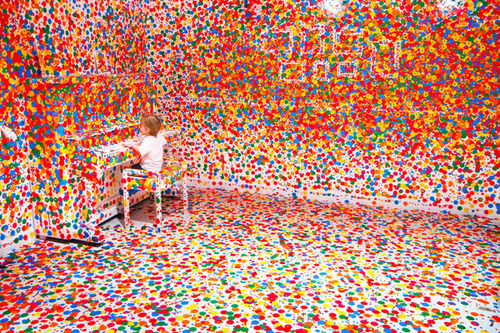
But see, even before you see that it's the APT 2002 installation that's the "popular interactive children's project," don't you just look at those polka-dots and say, "Waitamminit, how tall are Australia's "smallest visitors," and how'd they reach those dots up so high? Doesn't the distribution of dots show that they're concentrated in an adult's reach, not a kid's? Wouldn't stickers given to kids skew toward the bottom half of the installation? They didn't, it does, and they would. Which means everyone gets stickers, not just the kids. And the dynamic, then, is not Kids Gone Wild, but Museum Visitors Gone Childlike. Which is fine, just very different.

image via kids apt 2002
Which makes me wonder about that APT 2002 version, the one that was actually for kids. It turns out there was an entire Kids APT, a kids' triennial within a Triennial, an interactive exhibition space for kids [above] to create their own Do-Ho Suh-style wallpaper; paint their diaries on stones like Song Dong; and "decorate a Yayoi Kusama white room with colourful dots." The whole installation was kid-scale. Oh man, look at that adorable little kid and his dots.
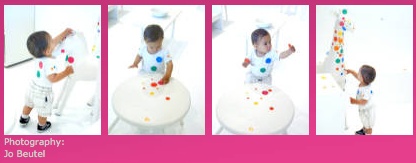
image via qag
Why, he looks just like the artist herself in her iconic 1968 photos, Self-Obliteration by Dots. Because that's the other thing that's bugging me, is that I'm not sure "invigorating" is what Kusama really means when she says "obliterating." At least it never has been.

In an interview on the occasion of the 1999 MoMA retrospective that basically reasserted Kusama's rightful place in the history of the New York art world of the 1960s, she explained, faxing from the Tokyo mental hospital where she lives, that it's the individual self that's getting obliterated: "By obliterating one's individual self, one returns to the infinite universe."
The educational resource kit for the Kids APT quotes an earlier manifesto:
Our earth is only one polka dot among the million stars in the cosmos . . . When we obliterate nature and our bodies with polka dots, we become part of the unity of our environment, I become part of the eternal, and we obliterate ourselves in love.So though she doesn't state it explicitly, there's a distinctively Buddhist undertone to Kusama's concept of obliteration, of the pervasive polka dots obliterating the distinction between the self and the space. In her 1960s work, she preferred to paint the polka dots on the nude bodies of the participants in her sex/love-filled Happenings, which she, not just sensationalist press reports, happily called orgies. Because it was 1968, people. Yay, orgies, right?

Kusama at the Central Park Alice in Wonderland statue, 1968, apparently from Screw magazine
So these are the things I think about when I see eyecandy flying indiscriminately around the web. Sometimes you just gotta say, "WTF?"
This is What Happens When You Give Thousands of Stickers to Thousands of Kids [thisiscolossal via dt reader sara]
Look Now, See Forever, a Kusama Yayoi retrospective, actually runs through March 2012 at the Queensland Art Gallery in Brisbane [QAG]
Previously, rare, and related: Warhol's Paintings for Children exhibition
Kids APT 2002 [QAG]


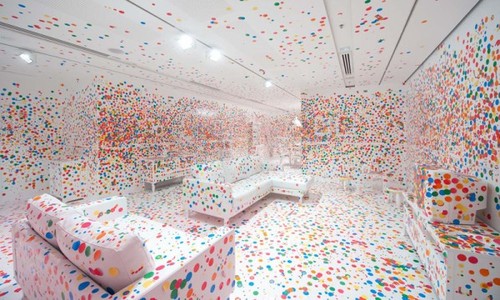
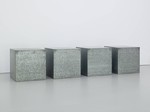
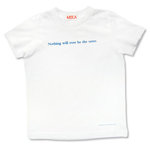
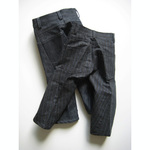

Whatever way it came about, it's an amazing sight to behold. Considering the usual dross you see when museums or galleries have a "contribute something of your own" area, it's amazing how well it turned out. Doubt it would look the same if it were in the UK - they'd be making rude shapes out of the dots for a start!